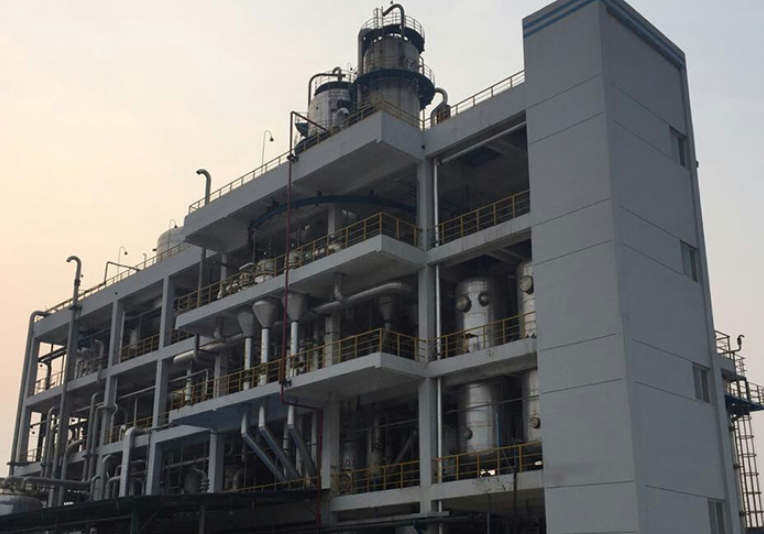Calcium peroxide is a solid chemical used as a source of oxygen or hydrogen peroxide. When placed in water, calcium peroxide begins to decompose and release oxygen. When treated or dissolved in acids, calcium peroxide forms hydrogen peroxide. Calcium peroxide is a pale yellow, granular or powdered solid oxidizer.

Appearance and Physical Properties
Calcium peroxide is a white, grayish, or yellowish powder that is odorless. Hydrogen peroxide is a colorless liquid with a bitter taste and is nearly odorless.
Calcium Peroxide (CaO₂)
Calcium peroxide is typically found in the form of a white, grayish, or yellowish powder. It is odorless and insoluble in water, but it dissolves in acidic solutions to produce hydrogen peroxide. One of the key features of calcium peroxide is its ability to release oxygen when it comes into contact with water, making it highly useful in applications where slow, controlled oxygen release is needed.
Hydrogen Peroxide (H₂O₂)
Hydrogen peroxide, on the other hand, is a colorless liquid that has a bitter taste and is nearly odorless. It is highly soluble in water, and it decomposes readily into water and oxygen, especially when exposed to light or heat. Due to its liquid form and fast decomposition, hydrogen peroxide is often used in applications that require quick disinfection or oxidation.
Key Uses of Calcium Peroxide and Hydrogen Peroxide
Calcium peroxide is used in soil remediation, as a dough conditioning aid, and in some toothpastes as a whitener. Hydrogen peroxide is used in cleaning, as a disinfectant, in personal care products, and in low concentrations in toothpaste and mouth washes.
Calcium Peroxide Applications
1. Soil Remediation: Calcium peroxide is commonly used in environmental applications, especially for soil remediation. When applied to contaminated soil, it slowly releases oxygen, which promotes the breakdown of organic pollutants by aerobic microorganisms. This makes it a powerful tool in cleaning up oil spills and other environmental hazards.
2. Agriculture: In agriculture, calcium peroxide is used to improve soil aeration and enhance seed germination. The slow release of oxygen helps create a better growing environment for plants, especially in waterlogged soils.
3. Dough Conditioning: In the food industry, calcium peroxide is used as a dough conditioning agent. It improves the texture and quality of baked goods by helping to strengthen the dough and give it better structure. Calcium peroxide is primarily used as a bleaching agent and dough improver in the food industry. It works by releasing oxygen, which oxidizes and bleaches the flour. This improves the whiteness and elasticity of the dough, making it easier to handle and work with. Calcium peroxide is considered safe for consumption in small amounts. It is approved as a food additive by the U.S. Food and Drug Administration (FDA) and the European Union (EU) under the E number E930.
4. Toothpaste Additive: Calcium peroxide is sometimes included in toothpaste formulations as a whitening agent, thanks to its ability to release oxygen and gently bleach the teeth.
Hydrogen Peroxide Applications
1. Disinfection and Cleaning: Hydrogen peroxide is a well-known disinfectant and is commonly used for cleaning surfaces, sterilizing medical equipment, and even disinfecting wounds. Its rapid breakdown into water and oxygen makes it an effective and eco-friendly disinfectant.
2. Personal Care Products: In personal care, hydrogen peroxide is used in low concentrations in products like mouthwash and toothpaste. It helps kill bacteria, whiten teeth, and improve oral hygiene.
3. Bleaching Agent: Hydrogen peroxide is also used as a bleaching agent in industries ranging from textiles to paper manufacturing. Its strong oxidizing properties allow it to break down color molecules in fabrics and pulp.
4. Hair Dye: In cosmetics, hydrogen peroxide is a key component in hair dyes. It helps to oxidize melanin in hair strands, allowing for the lightening or coloring of hair.
Properties of Calcium Peroxide and Hydrogen Peroxide
Calcium peroxide is insoluble in water but dissolves in acid to form hydrogen peroxide. When in contact with water, it releases oxygen.
Calcium Peroxide: Controlled Oxygen Release
One of the standout properties of calcium peroxide is its ability to slowly release oxygen when it reacts with water. This makes it particularly useful in applications requiring a steady oxygen supply over time, such as soil treatment or seed germination. In acidic environments, calcium peroxide dissolves to produce hydrogen peroxide, which further breaks down into water and oxygen.
Calcium peroxide’s release of oxygen can also be controlled through electrochemical methods, making it highly versatile in industrial processes.
Hydrogen Peroxide: Rapid Oxygen Release
Hydrogen peroxide is known for its quick decomposition. When exposed to light, heat, or certain catalysts, it rapidly breaks down into water and oxygen, releasing energy in the process. This fast reaction makes hydrogen peroxide ideal for cleaning, disinfecting, and bleaching purposes, where rapid action is needed.
In personal care products, hydrogen peroxide’s rapid release of oxygen helps in killing bacteria and whitening teeth without damaging surrounding tissues.
Release of H₂O₂ and O₂
Calcium peroxide is a solid carrier of H2O2 that releases it when dissolved in water. The rate of H2O2 release can be controlled by electrochemical methods. The release of O2 and H2O2 from calcium peroxide is a parallel reaction system. The rate of release of both O2 and H2O2 is accelerated by increasing temperature and decreasing pH.
Calcium Peroxide
Calcium peroxide acts as a solid carrier of hydrogen peroxide. When it comes into contact with water, it undergoes a reaction that releases both oxygen and hydrogen peroxide in a parallel process. The rate of oxygen release from calcium peroxide can be controlled by changing factors such as temperature and pH levels. Higher temperatures and lower pH levels can accelerate the release of oxygen and hydrogen peroxide, making calcium peroxide a useful compound in applications where slow, steady oxygen delivery is critical.
Hydrogen Peroxide
In contrast, hydrogen peroxide is a liquid that releases oxygen quickly once it starts to decompose. This release of oxygen is also influenced by temperature and the presence of catalysts such as manganese dioxide. Hydrogen peroxide’s decomposition is exothermic, meaning it releases heat as it breaks down into water and oxygen.
Environmental Impact
Both calcium peroxide and hydrogen peroxide are considered environmentally friendly chemicals. Once they decompose, they leave behind non-toxic byproducts: water and oxygen. This makes them preferable in many industries seeking to reduce environmental pollution and limit harmful chemical residues.
FAQs
1. Can calcium peroxide replace hydrogen peroxide in cleaning products?
While calcium peroxide can release hydrogen peroxide, it is typically not used in cleaning products. Hydrogen peroxide's liquid form and rapid decomposition make it more suitable for cleaning and disinfecting.
2. Which compound releases oxygen faster, calcium peroxide or hydrogen peroxide?
Hydrogen peroxide releases oxygen much faster than calcium peroxide. Calcium peroxide releases oxygen slowly over time, making it useful for applications requiring controlled oxygen delivery.
3. Is calcium peroxide safe for use in food?
Yes, calcium peroxide is used as a dough conditioner in the food industry and is considered safe in regulated amounts.
4. Can hydrogen peroxide be used for soil remediation?
Hydrogen peroxide can be used for soil remediation, but its rapid decomposition makes calcium peroxide more effective for long-term oxygen release in such applications.
5. What happens when calcium peroxide reacts with water?
When calcium peroxide reacts with water, it releases both oxygen and hydrogen peroxide, which then decomposes into water and more oxygen.
6. Can hydrogen peroxide bleach teeth?
Yes, hydrogen peroxide is commonly used in teeth whitening products due to its ability to break down stains and lighten tooth enamel.
Conclusion
Both calcium peroxide and hydrogen peroxide have valuable roles in a variety of industries, from agriculture to personal care. Calcium peroxide is favored for its controlled oxygen release, while hydrogen peroxide is preferred for rapid oxidation and disinfection. Understanding the differences between these two compounds helps in selecting the appropriate one for specific applications.
















